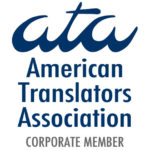As we mentioned in an earlier Transpanish Blog post, several groups pushed for Latino permanent residents to apply for citizenship in time for this year’s election. In fact, one in five new voters is Hispanic. Both Obama and McCain spent millions reaching out to Hispanic voters, especially in the swing states. These campaigns, along with non-partisan groups which encouraged Latinos to participate in civic life, made the votes of Hispanic citizens critical to the presidential race.
So what does this mean for Obama’s success? One well-known blogger says that Latinos voted against the Republicans and not for Obama. Tejeda’s blog offers some fascinating commentary about Latinos and politics, and is worth a read. In an Oppenheimer Report released before the election, the point is made that Obama’s almost flawless Spanish pronunciation and use of the familiar tu, may be disingenuous and make Latinos think that he’s more on their side than he actually is.
In Colorado and Florida, both key states, Latinos voted more than ever before. In Colorado, the number of Latinos who voted more than doubled from the 2004 election. A Colorado Independent article cites Pew Hispanic Center data showing that Latinos in Colorado made up 17 percent of total voters, up nine points from the 2004 election.
In Florida, Obama was the first Democrat to win the vote of the majority of Latino voters. While nationwide, Obama won by a larger margin, no other democrat has ever taken Florida since they begin doing exit polls in the 1980s. Older Cubans typically vote Republic, but Florida is experiencing a demographic and generational shift, as non-Cuban Hispanics and younger people of Cuban descent lean towards the blue. The Miami-Herald reports on what this may mean for Florida’s political landscape.
The Pew Hispanic Center, as always, provides detailed demographic info about Latinos in the U.S. and their report on the exit polls is no exception.
Of course, Obama hasn’t yet articulated a plan for immigration reform and Latinos themselves certainly don’t have a uniform stance on immigration. But whatever opinion Latinos have of immigration in the U.S., the NALEO Educational Fund is an incredible resource for Latinos who want to participate more deeply in civic life.



